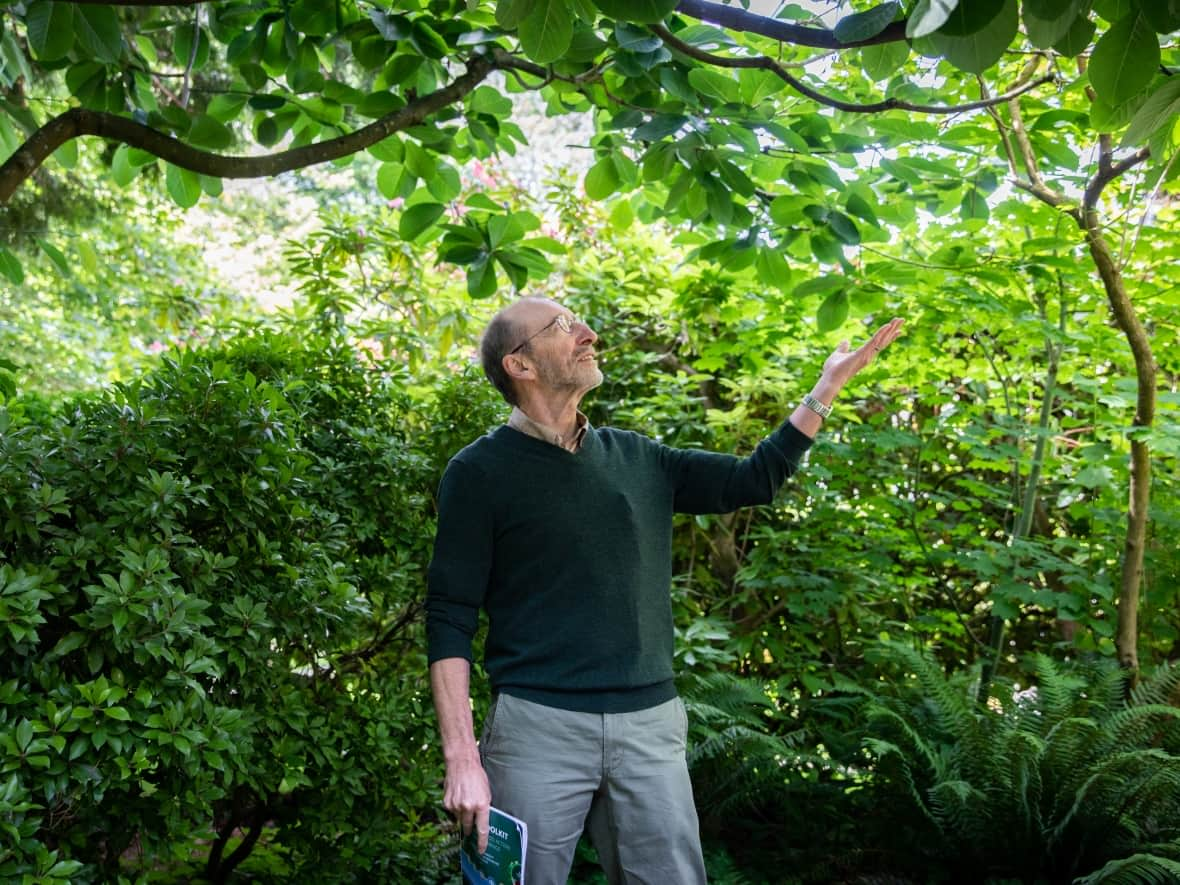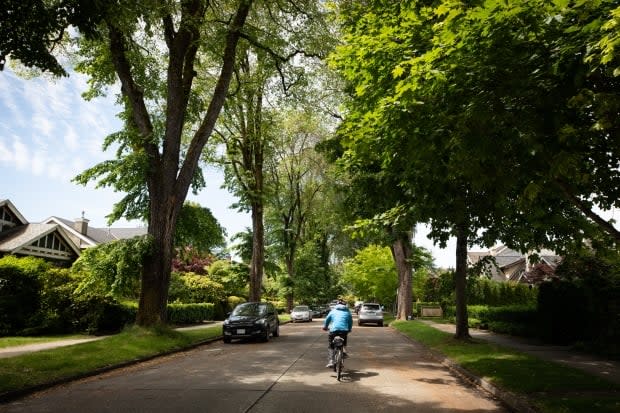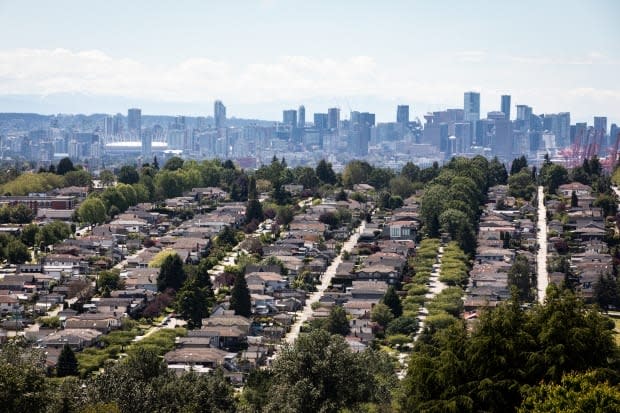Expanding green canopy can cool neighbourhoods as heat wave danger grows, say experts

As B.C. approaches the one-year anniversary of a heat dome that killed 619 people, experts are urging city planners to expand and protect the province's urban tree canopy — a surefire way to cool swaths of city streets and save lives without the cost of air-conditioning and overhauling building codes, they say.
Stephan Sheppard, a professor emeritus at the University of British Columbia's department of forestry, says creating and preserving consistent urban tree canopy is "the best and the cheapest way to cool whole neighbourhoods as well as individual homes."
Sheppard's research, which was completed with the City of Vancouver and involved attaching heat censors on the backs of bikes, found a difference of 8 C between neighbourhoods with higher levels of green canopy and those dominated by asphalt on a hot summer's day.
He says the cumulative effect of consistent tree cover does much more than provide shelter from the sun and shade individual homes.

"Partly because of shade, partly because of evapotranspiration — they're putting moisture into the air the whole time and that has a cooling effect as well, even if it isn't actually shading the building, it will still cool your neighbourhood."
A 2018 report from Vancouver's Park Board shows that the average land surface temperature on a hot day varied by more than 20 C between the coolest and hottest city blocks, with the heat concentrated in neighbourhoods like the Downtown Eastside, Marpole, parts of southeast Vancouver and False Creek Flats.
'A powerful business case'
Around 23 per cent of Vancouver is covered by a green canopy, according to the city, which has set a goal to increase that number to 30 per cent by 2050.
Sheppard says the ideal is to aim for 40 per cent to reach optimal cooling — but by 2050, the city is expected to have a million new residents, forcing planners to balance densification and greenification.
The city also faces an uphill battle thanks to rising land costs and fierce competition from developers, he said.
Alex Boston, executive director of Simon Fraser University's Renewable Cities program, says it's possible to create density while expanding green canopy.
He points to a shady modern enclave near Lonsdale Quay in North Vancouver, where modern multi-family condos are shaded by deciduous trees, and water features like a duck pond and stream under a small bridge provide communal cool spots just metres from a busy street.

"We can grow our urban tree canopy and have a nice attractive form of density," said Boston, who served as panellist on the B.C. Coroners Service report examining last year's heat dome.
"There's a powerful business case for mitigating flood risk and for mitigating heat mortality events ... it is those neighbourhoods that don't have the same strength of an urban tree canopy where you do have higher mortality rates and that is something that we have to turn around."
Boston says it's a misconception that areas zoned for single-family homes are greener compared to denser areas, as many properties end up clearcut when older homes are torn down and replaced by new builds.
"The most precipitous loss in urban tree canopy is happening in our single-family areas. Today higher density places actually receive much more regulatory intervention and much more enforcement that isn't happening in the single-family areas ... 30 years ago, it was completely the reverse."
Communal spaces
While people with backyards can create their own green alcoves, Sheppard says there must also be communal green spaces and social infrastructure for greater protection against deadly heat.
For example, the District of Oak Bay on Vancouver Island has launched "CoolKit," a program encouraging people in homes and condos to engage with strata councils and neighbours about cooling their buildings and increase shading.
The district has also aimed to reach 40 per cent green canopy by 2045.
"It really has to do with bringing green infrastructure to where people are," said Sheppard.
"[Trees are] beautiful, they hugely help our mental health so it's very short-sighted to leave them out of the equation."


